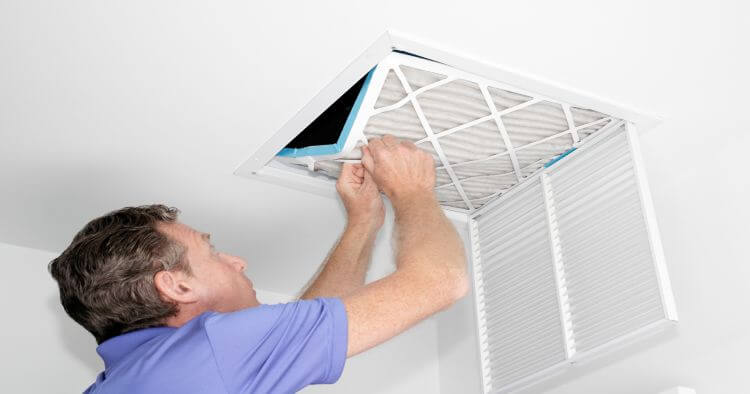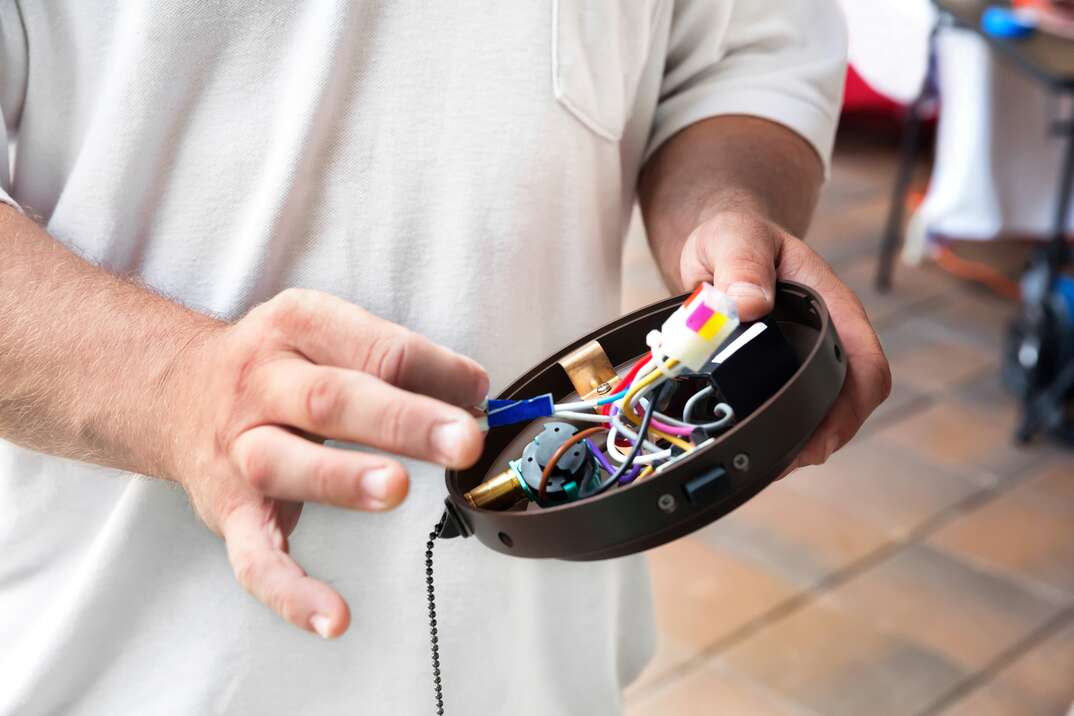How to Clean an Air Conditioner

On a hot, muggy day, having an air conditioner that runs well is priceless. Unfortunately, if your air conditioner is producing weak output, the unit itself might not be to blame. It may have more to do with the fact you haven't cleaned the system recently. According to the U.S. Department of Energy, a dirty cooling system can lead to reduced airflow. The less airflow you have, the hotter your house will remain.
[1]:
[2]: /en-us/assets/images/blog/HomeServe-CTAsAvailablePlan.jpg
[3]: /en-us/assets/images/blog/HomeServe-CTAsViewPlan.jpg
[![HomeServeAvailablePlan][2]][1]
Cleaning your cooling system annually can also help to benefit your wallet. Because regularly maintaining your air conditioner will help it run more efficiently, you could garner some savings on your energy bills. It's certainly worth a few minutes of work to keep some extra cash in your pocket. If you don't properly maintain your cooling system, you could have to get a replacement system.
1. Turn Off the Power
The first step on your air conditioner maintenance checklist is to shut off power to the system. To be safe, switch it off at the unit and also at your electrical panel.
2. Tidy Up the Fins
The outdoor unit of a central air conditioner contains many delicate metal strips called fins. The condenser coil runs through them. Over time, the fins and the coil can get bogged down with dirt.
It's best to wash down the fins from the inside of the unit, so unscrew the fan housing at the top of the air conditioner and lift it up. Reach inside to spritz the fins with an air conditioning cleaning spray to help loosen the mess. Rinse the fins with a steady stream of water aimed toward the outside of the unit. It's better to use a garden hose than a pressure washer.
Before screwing the fan back in place, wipe off any debris.
Next, straighten any bent coils. Special fan combs are made for this job, but you can also use a butter knife.
Before heading inside, be sure to clear any leaves or other buildup from around the unit.
3. Wipe Down the Evaporator Coil
Once the outside unit has been cleaned, it's time to address the indoor portion. Take the panel off the unit so you'll have access to the inside.
First, vacuum any loose debris. You can also gently run the vacuum hose over the evaporator coil. You may want to use a self-rinsing air conditioning cleaning spray as well.
4. Clear Out the Drains
There are two ways you can do this. The U.S. Department of Energy recommends running a wire through the condensation drain tube to make sure that it isn't clogged. Family Handyman suggests pouring a 1:16 mixture of bleach and water through the tube.
Wipe down the drain port where the tube connects to the system as well.
Once the inside unit is clean, you can screw the front panel back into place.
5. Wash or Replace the Filters
No matter how clean your AC fins and evaporator coils are, if the filter is dirty, your AC won't run its best. Switching out the filter may result in a 5% to 15% reduction in energy consumption.
Most filters are designed for one-time use, so you'll remove the old one and replace it with a brand-new one. Select models can be washed, dried and put back in the air conditioner.
During the summer months, switch out the filter every one or two months. If you live with pets or in a dusty region, you may need to do this more frequently.
6. Extra Steps for Window Air Conditioners
Even if you don't have central air, you'll still need to know how to clean an indoor air conditioner. The steps for window units are quite similar to those for central air systems. First, unplug the air conditioner so there's no power running to it. Next, remove the unit from the window.
After that, you can clean the coils, the fins and the drains. You can also wipe down the housing with a damp rag. Just be sure to keep water away from the motor.
When you put the air conditioner back in the window, check the seals around it. If air can escape from around the sides, you'll lose efficiency. Peel-and-stick foam weather stripping will help prevent leaks.
7. Call in Expert Maintenance for Your Air Condition System
There's a lot you can do on your own to keep your air conditioner unit running well, but an expert AC professional will have the expertise and tips and tricks for maximum cooling efficiency. Consider hiring an expert technician to perform an annual check of your system. This maintenance visit will involve not only cleaning the air conditioner but also applying lubricant and checking settings.
Making sure that all parts, including the electrical connections, work properly is another important step in air conditioner maintenance service. Detecting repair needs early is key to keeping your AC system in good shape. The professional air conditioner maintenance and cleaning cost will be worth it if it saves you the trouble of dealing with a breakdown later in the year.
Having a plan from HomeServe is another smart step you can take for air conditioner peace of mind. When a breakdown occurs, simply call our 24/7 repair hotline. We'll arrange for a licensed, local air conditioner technician to visit your home, and repairs will be covered at no charge, up to the benefit amount.
[![HomeServeViewPlan][3]][1]


